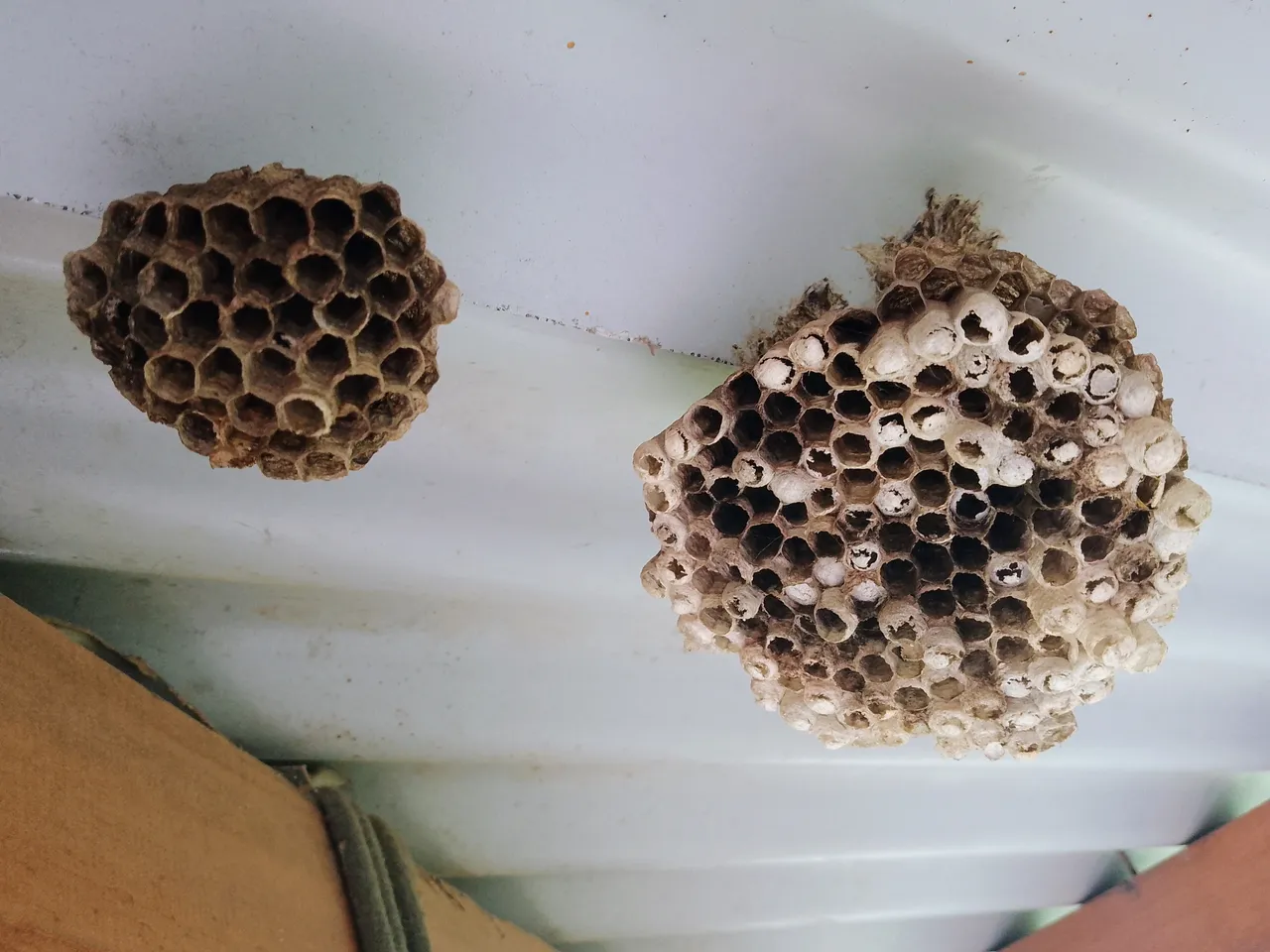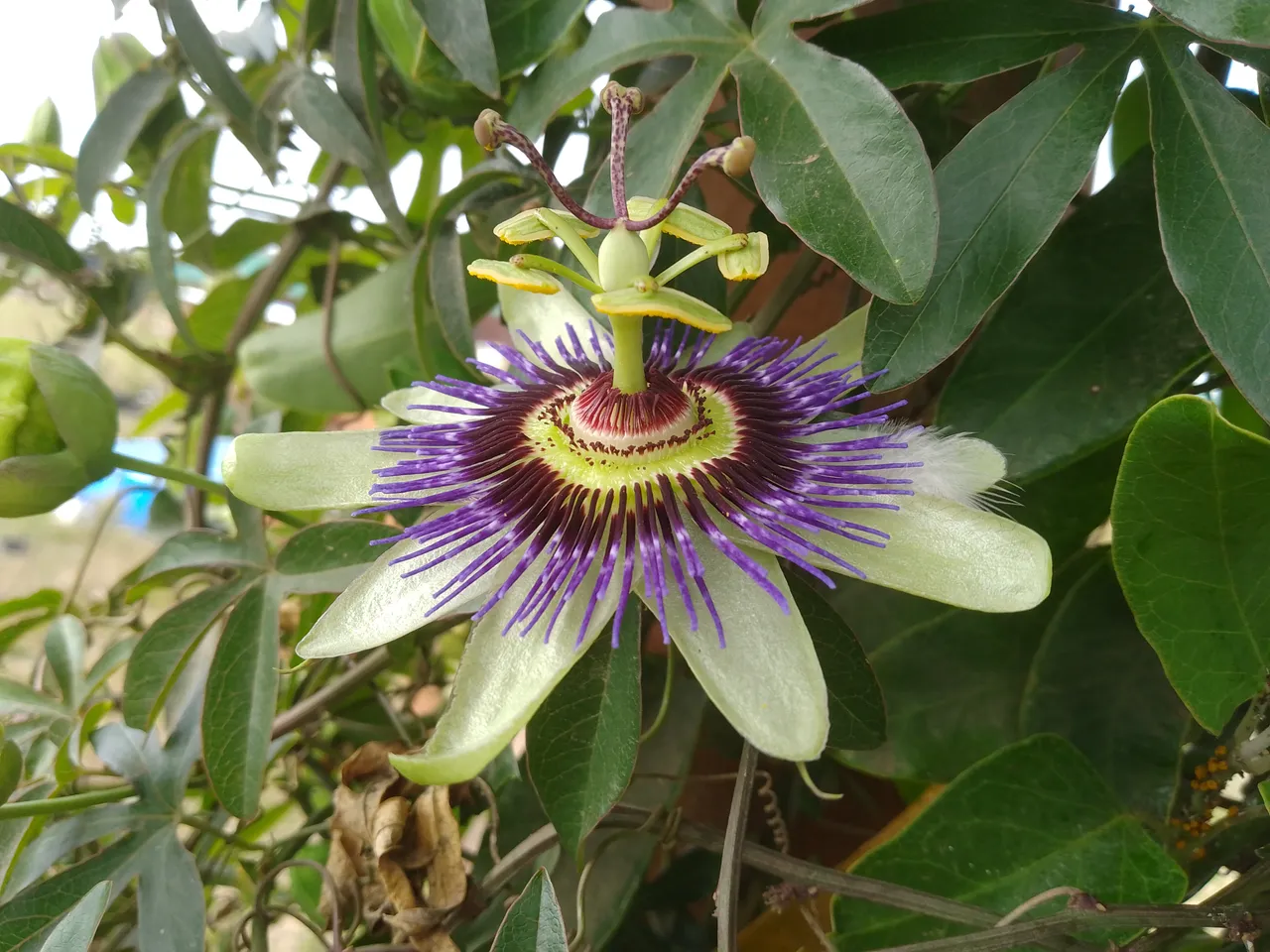Some time ago we found this wasp in a park near the Paraná River.
Hace un tiempo encontramos esta avispa en un parque, cerca del río Paraná.

Wasp. Avispa
My first reaction, of course, was, "watch out, a wasp". But it was only a first impulse. Several times colonies of wasps have made their honeycomb (or whatever it's called in the case of wasps) on the veranda of my house and I've never had any problems. We just treat each other with distance and respect.
Mi primera reacción, claro, fue, "cuidado, una avispa". Pero fue solo un primer impulso. Varias veces colonias de avispas han hecho su colmena en la galería de mi casa y nunca he tenido problemas. Solo nos tratamos con distancia y respeto.

A wasp's nest in my house. Un panal de avispas en mi casa.

I love the textures that form the honeycomb cells. Me encantan las texturas que forman las celdas.

A little closer. Un poco más cerca.

This camoati (Polybia occidentalis) hive was in my house for a day, on a sign. Esta colmena de camoati (Polybia occidentalis) estuvo durante un día en mi casa, sobre un cartel.

The same sign, seen from above. El mismo cartel, visto desde arriba.
The behavior of this wasp caught my attention. It flew from time to time and occasionally also landed on the ground near a perfectly circular hole in the clay soil.
El comportamiento de esta avispa me llamó la atención. Volaba de a ratos y de a ratos también se posaba en el suelo, cerca de un agujero perfectamente circular en la tierra arcillosa.

Wasp near the hole. Avispa cerca del agujero.
Accustomed to honeycombs, I did not imagine that this hole was the entrance to its nest. Rather, I thought it was waiting for some critter to come out of there to hunt it. Our surprise, then, was great when we saw how the wasp went in and out of that small hole. Luckily, it did it several times and I was able to shoot a little video. (Sorry for the quality, but I didn't want to get too close to the wasp).
Acostumbrado a los panales, no me imaginé que ese agujero era la entrada a su nido. Más bien pensé que estaba esperando que algún bicho saliera de allí para cazarlo. Nuestra sorpresa, entonces, fue grande cuando vimos cómo la avispa entraba y salía de ese pequeño agujero. Por suerte, lo hizo varias veces y pude filmar un pequeño video. (Perdón por la calidad, pero no quería acercarme demasiado a la avispa.)
https://youtube.com/shorts/OO5qQ0CPpbU?feature=share
I tried to identify the wasp with the inaturalist app. Identifying the exact species of a wasp is not an easy task, and I'm not an entomologist or anything like that. In the app, they suggested to me that it was a potter wasp, from the subfamily Eumeninae, which has 200 genera and who knows how many species, and it most likely is. However, it was very strange to me at first - don't potter wasps build their nests out of mud? That's why they're called that...
Traté de identificar la avispa con la app inaturalist. Identificar la especie exacta de una avispa no es una tarea fácil, y no son entomólogo ni nada parecido. En la app, me sugirieron que era una avispa alfarera, de la subfamilia Eumeninae, que tiene 200 géneros y quién sabe cuántas especies, y es muy probable que lo sea. Sin embargo, en un principio me resultó muy extraño. ¿Las avispas alfareras no hacen el nido de barro? Por eso se llaman así...

Abandoned potter wasp nest in a window of my house. Nido abandonado de avispas alfareras en una ventana de mi casa.

Detail of the nest. Detalle del nido.
I did some research on Wikipedia and it says that while some species of potter wasps make their nests out of mud, most use cavities in the ground or in wood.
As a bonus track, I was also able to photograph this "little mirror" butterfly, as we call it in my area (Agraulis vanillae), whose caterpillars feed exclusively on passionflower.
Investigué un poco en Wikipedia y dice que, si bien algunas especies de avispas alfareras hacen sus nidos de barro, la mayoría usa cavidades en el suelo o en maderas.
Como bonus track, también pude fotografiar a esta mariposa "espejitos" (Agraulis vanillae), cuyas orugas se alimentan exclusivamente de la pasionaria.

Passion butterfly. Mariposa espejitos.

Passionflower (Passiflora caerulea). Pasionaria (Passiflora caerulea).
All photographs are of my authorship.
Original in Spanish. Translated with Deepl.
Todas las fotografías son de mi autoría.
Original en español. Traducido con Deepl.